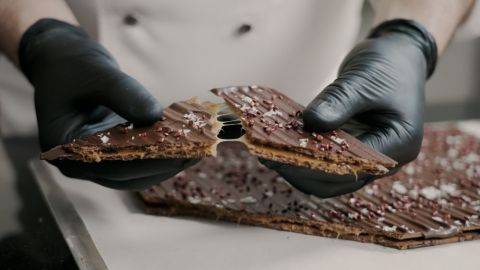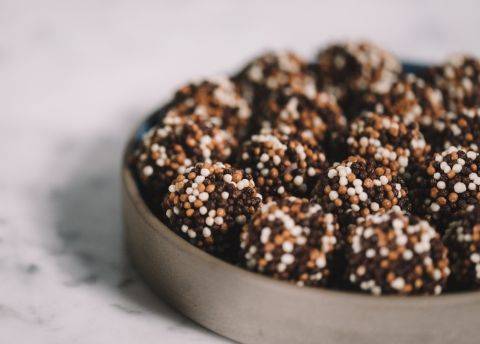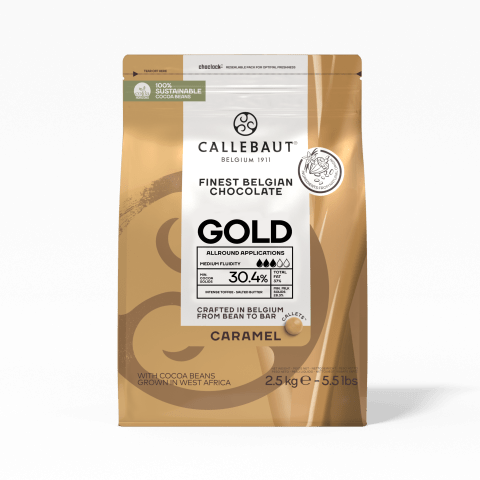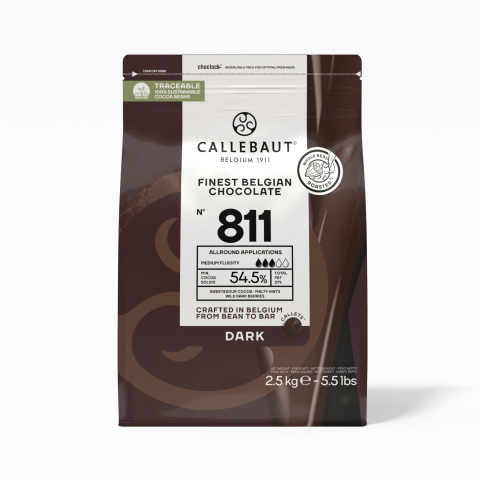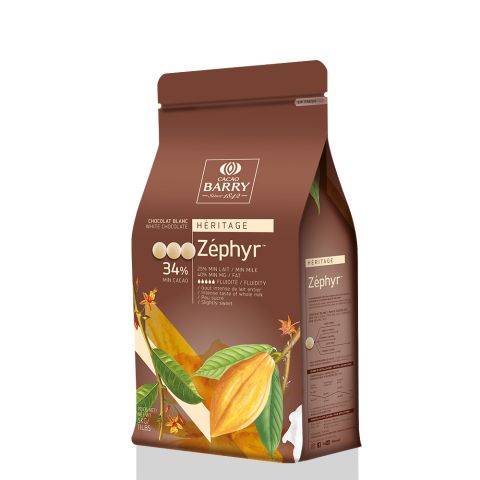Tips for Creating and Improving Ganache Recipes
Tips for Creating and Improving Ganache Recipes
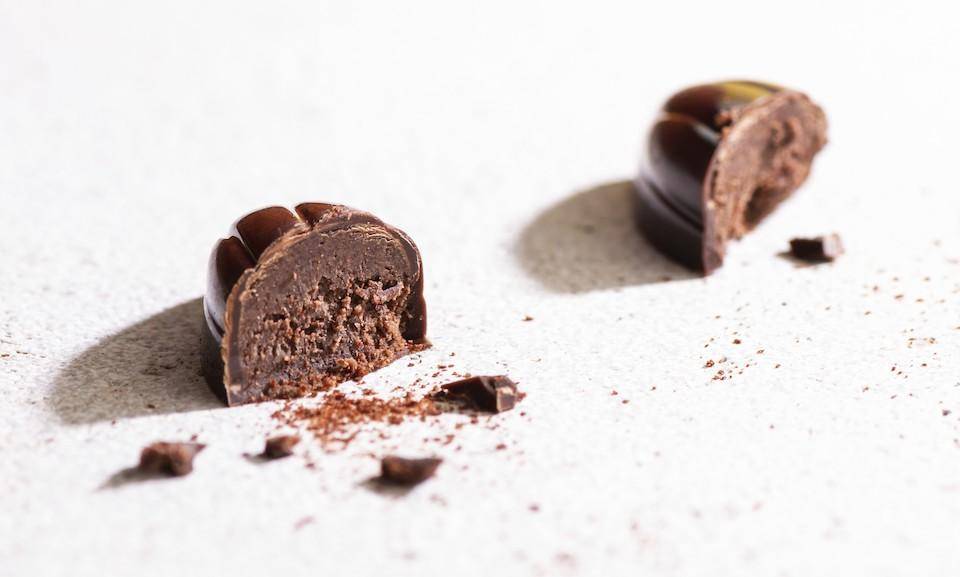
Armed with guidelines for ideal ganaches and information about your ingredients, it's time to evaluate your products. You may want to analyze a recipe before attempting a test batch, but our chefs generally recommend making a small amount of a given recipe and evaluating its taste and texture in a practical rather than theoretical way.
If the flavor is good and the texture is right, you may want to consider questions of shelf life if this is a concern for you. At this point, it is a good idea to analyze the recipe to help you learn what it is about the recipe that produces appealing results for you. Analyzing the recipe will also allow you to troubleshoot later if something changes.
If there's something about the end product that isn't quite right, you may be able to step in and make adjustments to achieve the results you want. As you evaluate a recipe, consider:
- Taste - does it have the flavor your customers prefer? Does the chocolate flavor shine? What about other flavors like raspberry or tea?
- Texture - is it creamy enough? If it's for enrobing, are you able to cut it and manipulate it as you need to?
- Process - does producing it fit with your schedule? Given your current set-up, are you able to produce it as written?
- Workability - can you pipe it or pour it as you need to?
- Shelf Life - does its shelf life meet your current needs?
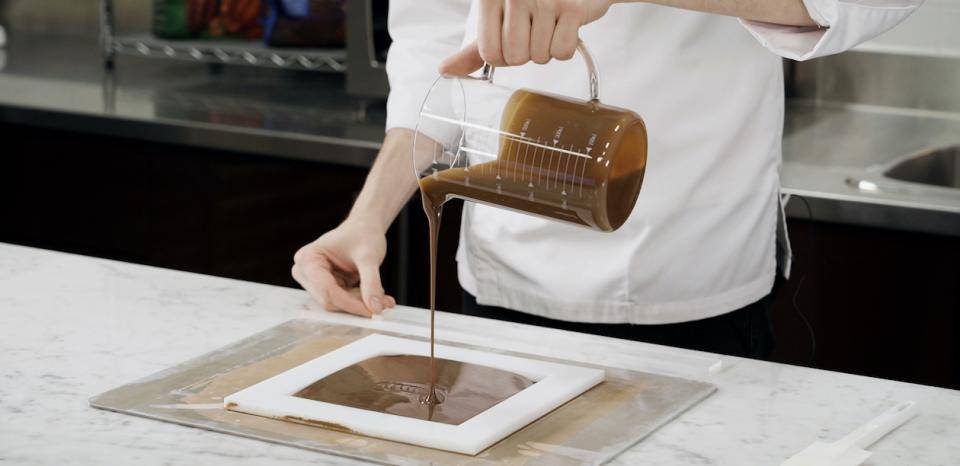
Tips for Improving an Existing Recipe
What Needs to be Improved?
- Taste
Taste is purely subjective, so make adjustments that suit your customer's palate.
- Texture
- adjust the ratio of ingredients such as cocoa butter or sugars
- try different types of sugar or combinations of sugars
- Consider using or omitting milk or vegetable fats
- Process
If the recipe is difficult to produce, consider changing the production method.
- Workability
If it is difficult to pipe or pour, change the ratio of ingredients.
- Shelf Life
- Increase dry matter
- Increase sugar content (depends on the type of sugars used)
- Robust knowledge of ingredients is crucial. The longer you need the shelf life, the more critical it is to understand every ingredient fully.
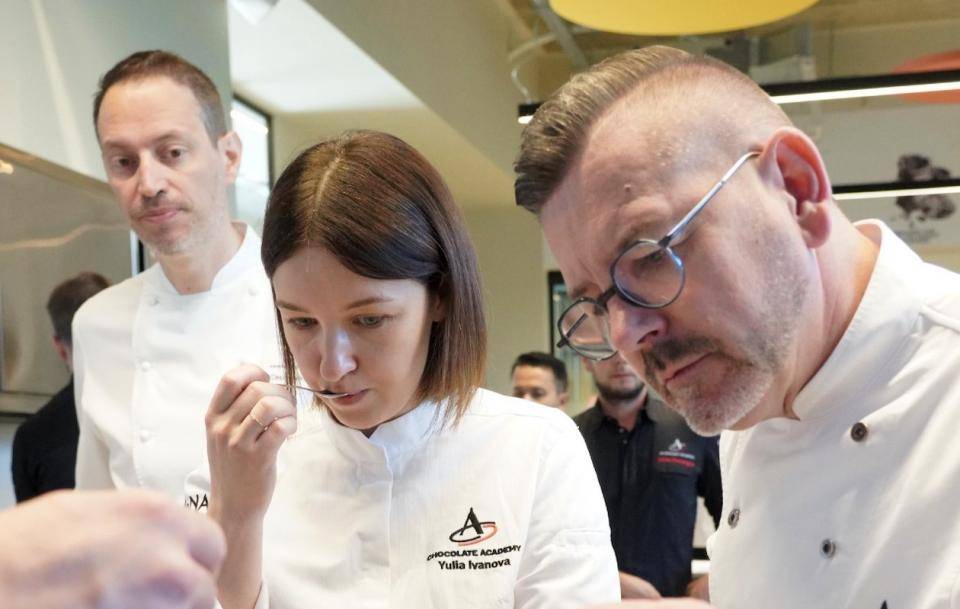
Creating a Recipe
If you'd like to create a new recipe, one that is unique to you and your business, our chefs recommend following a process that looks something like this:
- Ask yourself: Which ingredients will I use for flavor or other needs? What are the characteristics of those ingredients?
- Ask yourself: Do I have a recipe close to what I want to create?
- Ask yourself: Would my existing recipe work if I were to simply replace some ingredients?
- Balance a few recipes to get close to something you think will work.
- First round of testing: experimentation. Try a maximum of 2-3 recipes per round of testing and evaluate those. Choose one of these recipes that comes close to what you want and work on optimizing that recipe.
- Rebalance the recipe as needed to compare, evaluate, and optimize results.
- Second round of testing: optimization. Make test batches of 2-3 versions of your rebalanced recipe.
- Third round of testing: final optimization. Perform a third round of testing if needed. Make sure you can reproduce the results.
Tested Recipes from Chocolate Academy™ Chefs
Great Recipes Start with Great Ingredients!
Our couvertures are created and tested by our chefs to ensure you get the best possible results.

